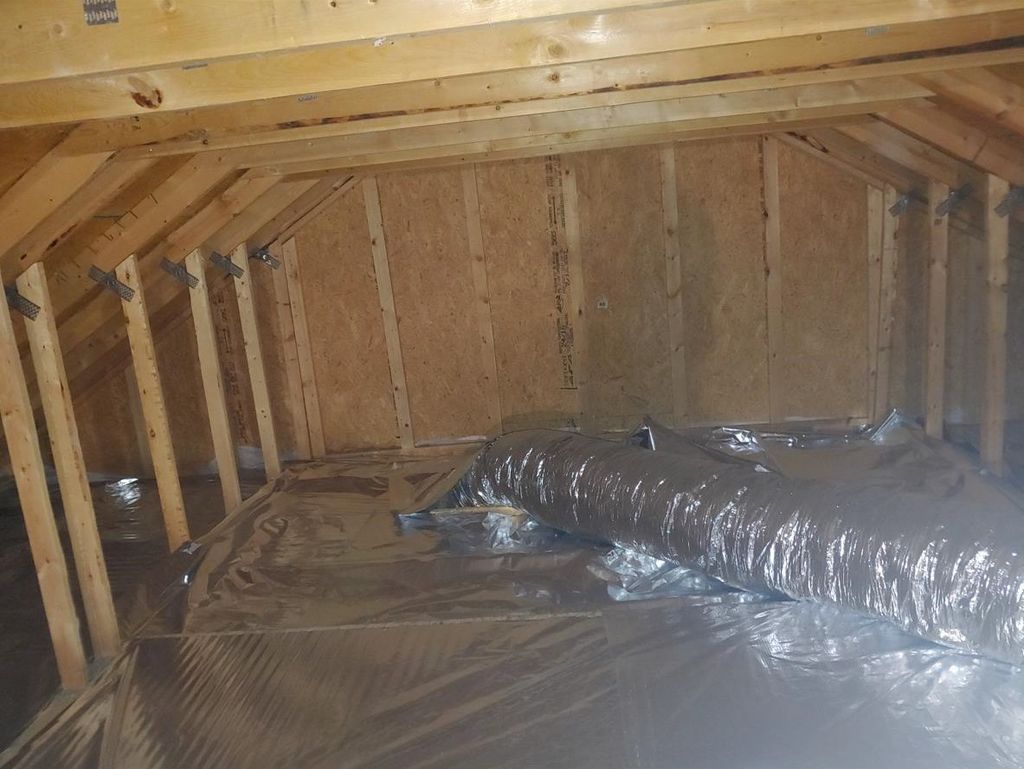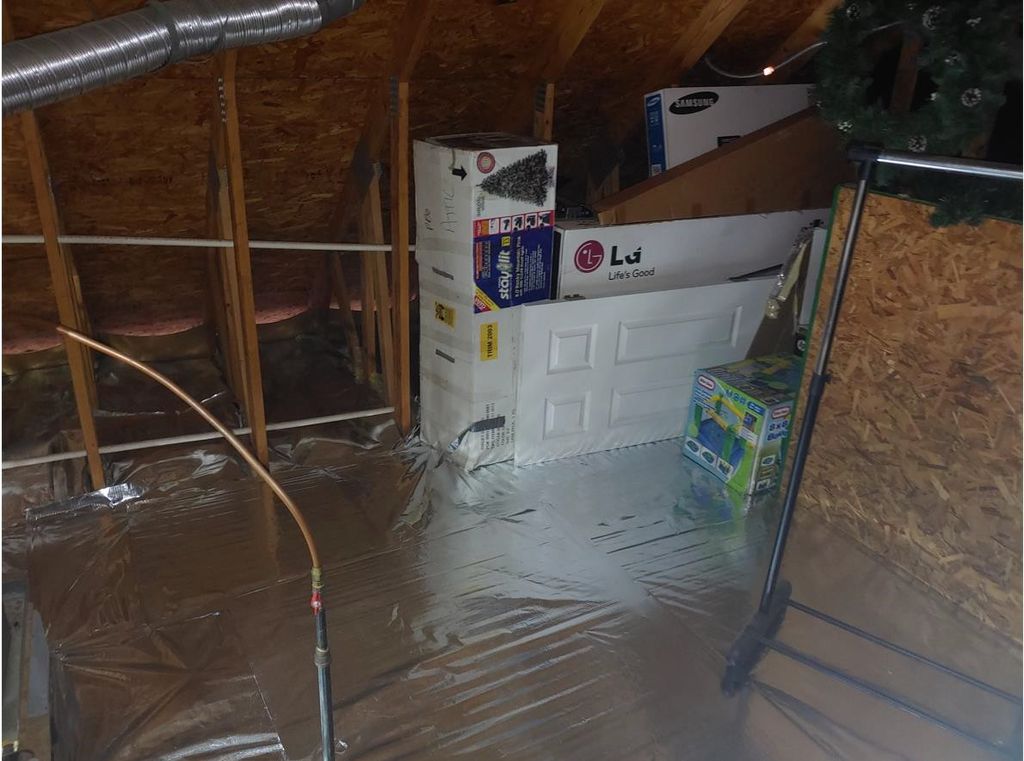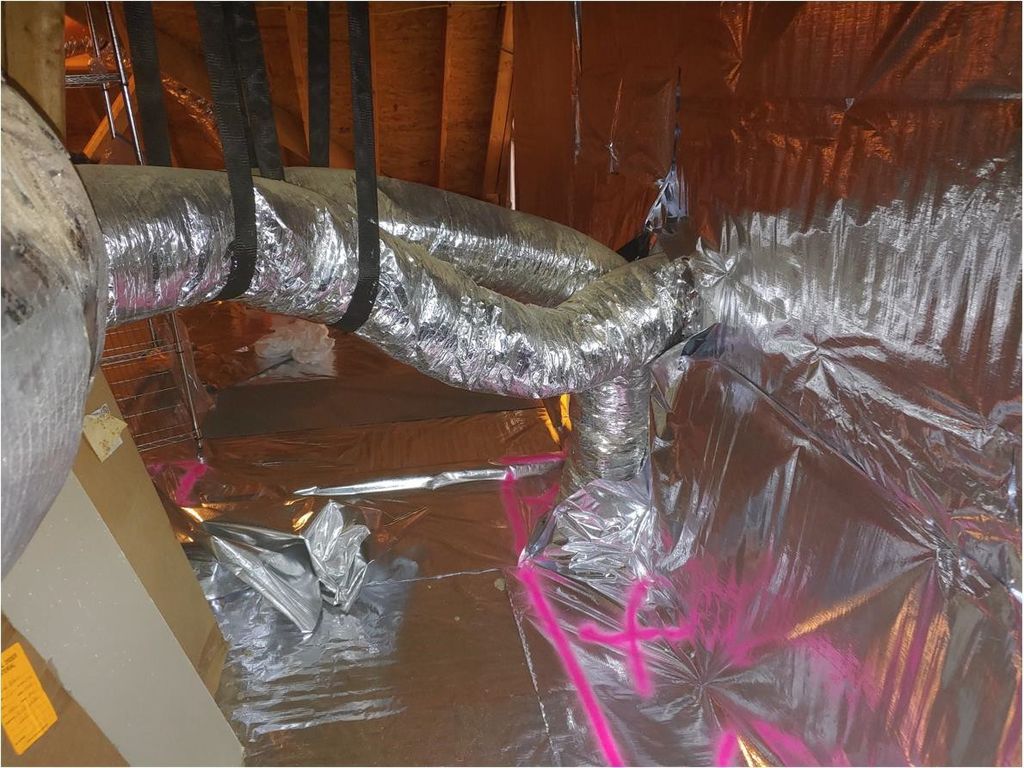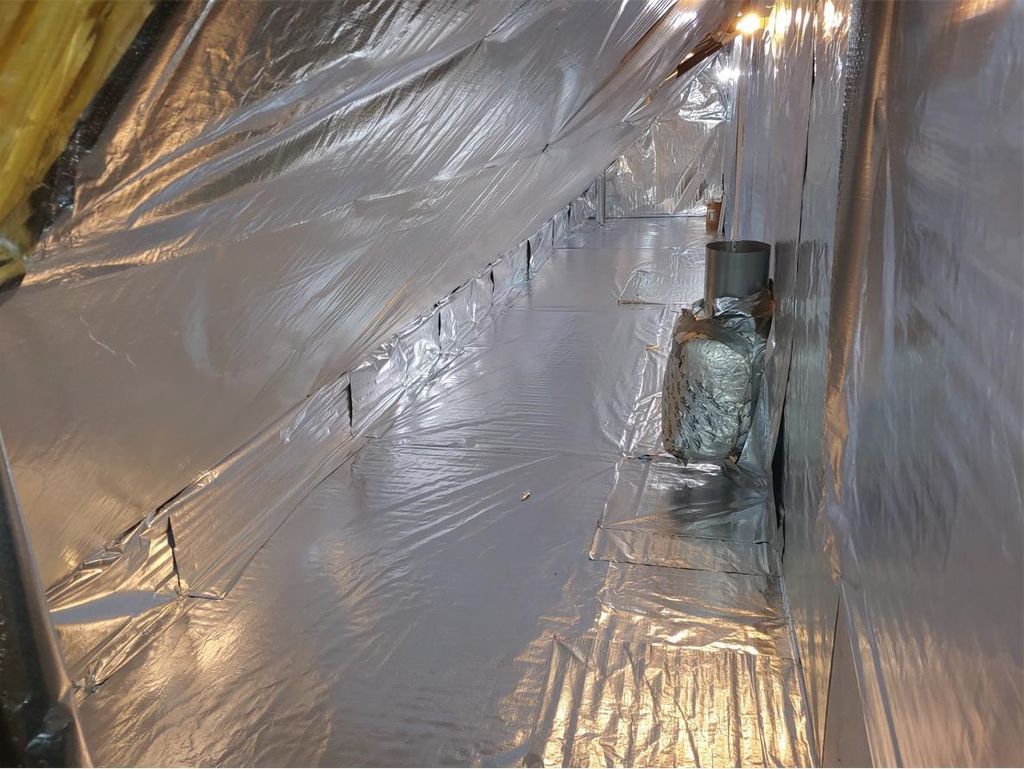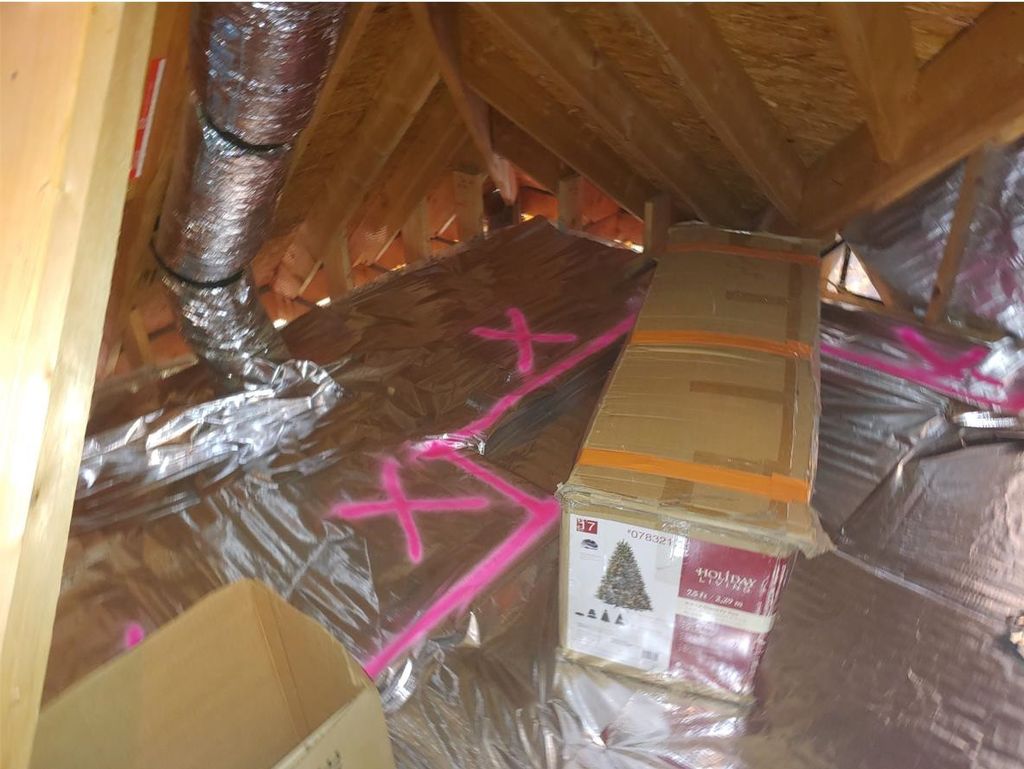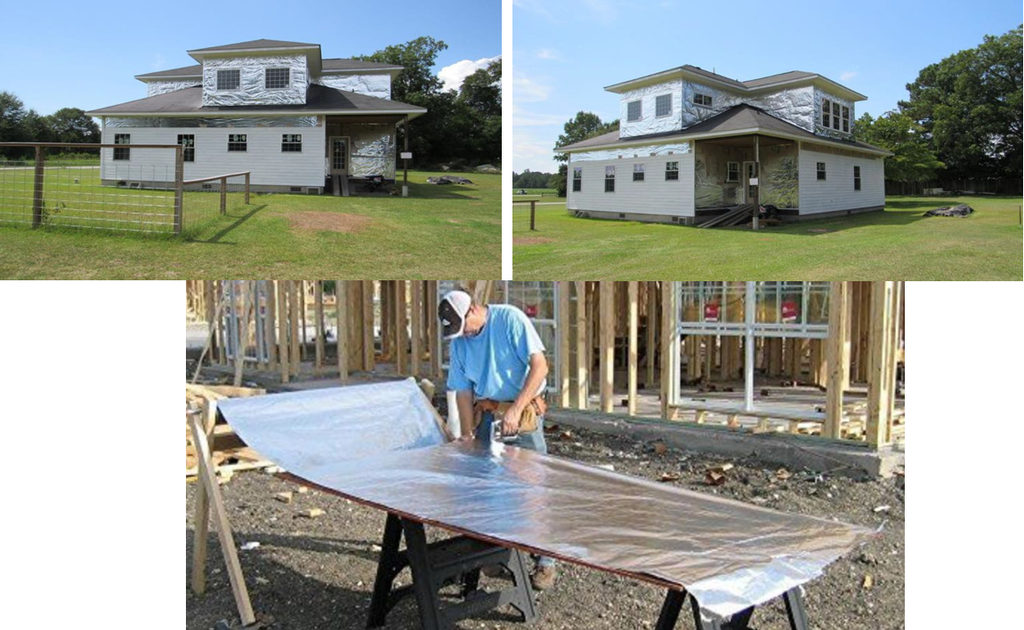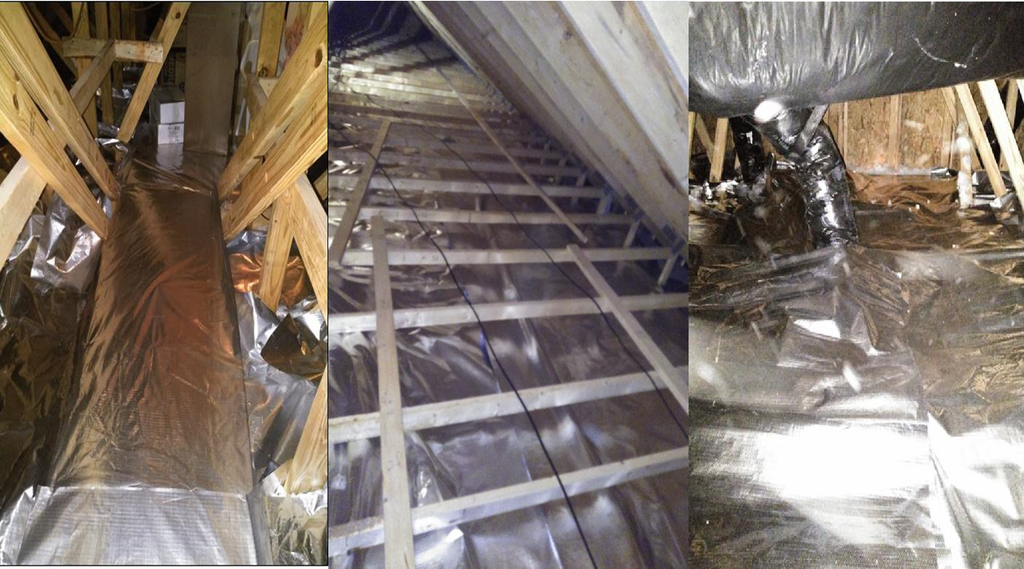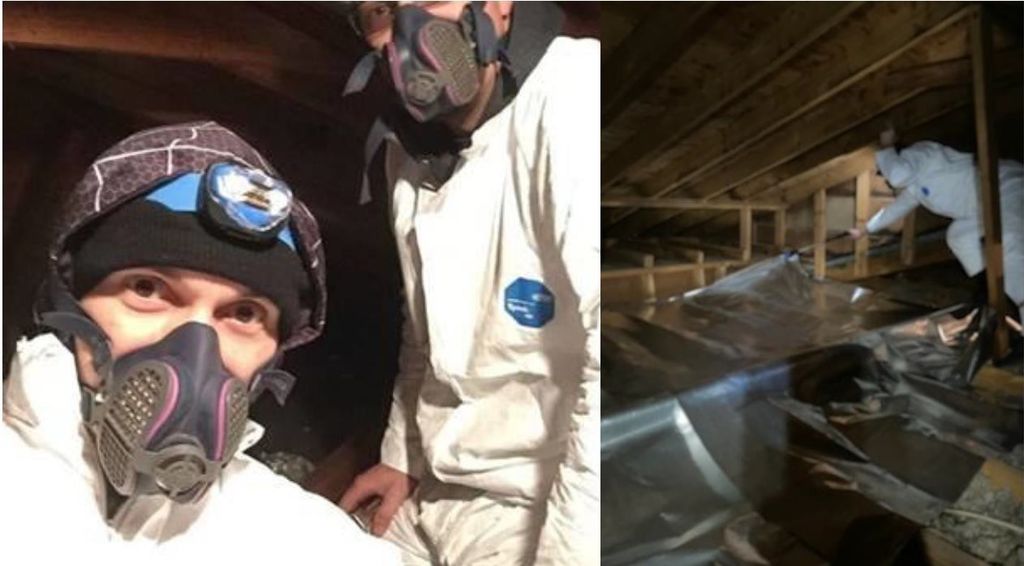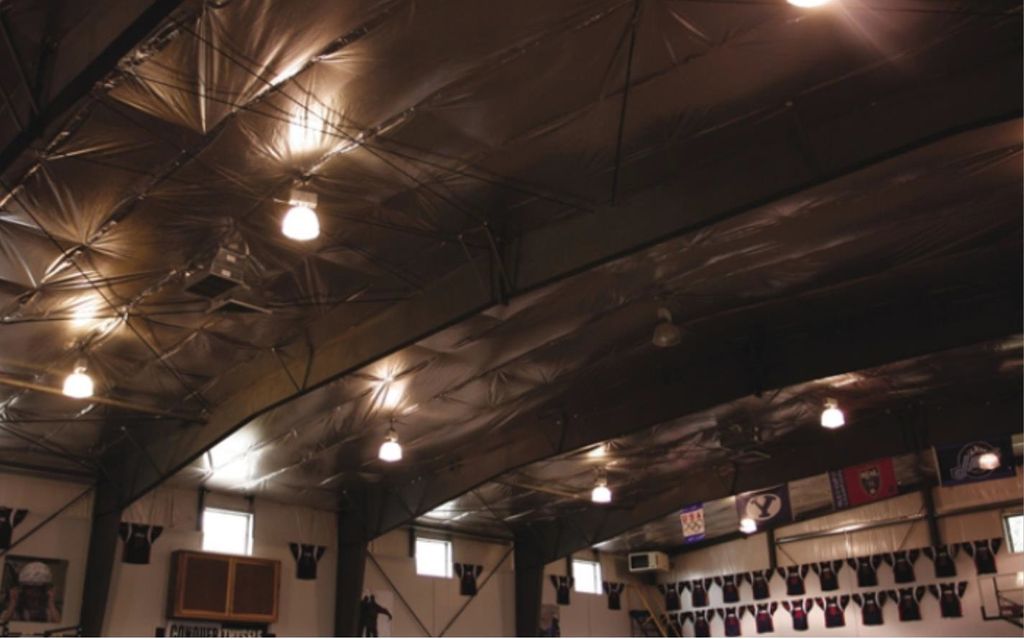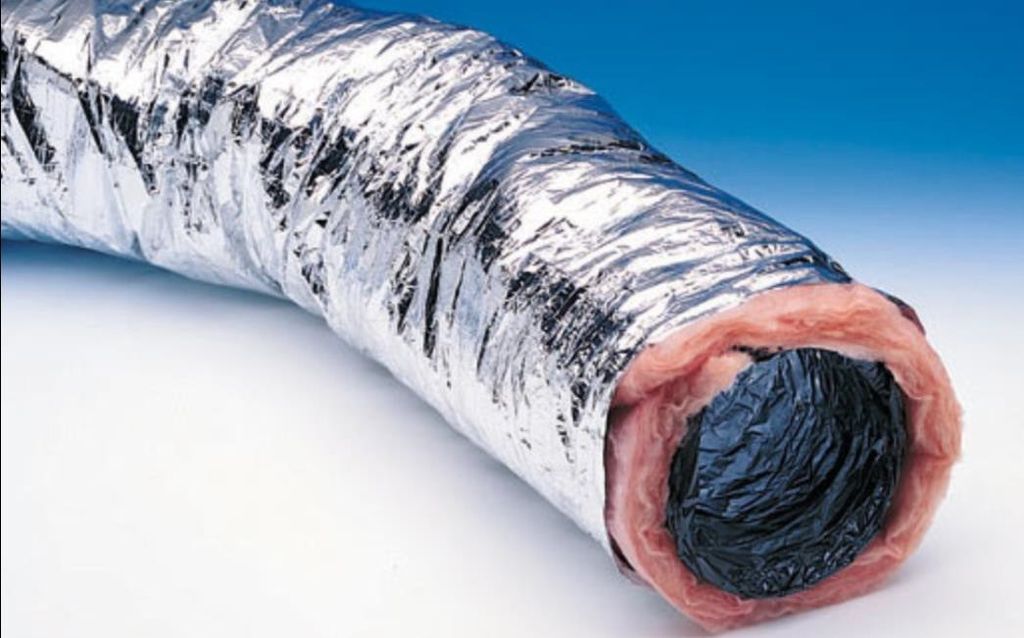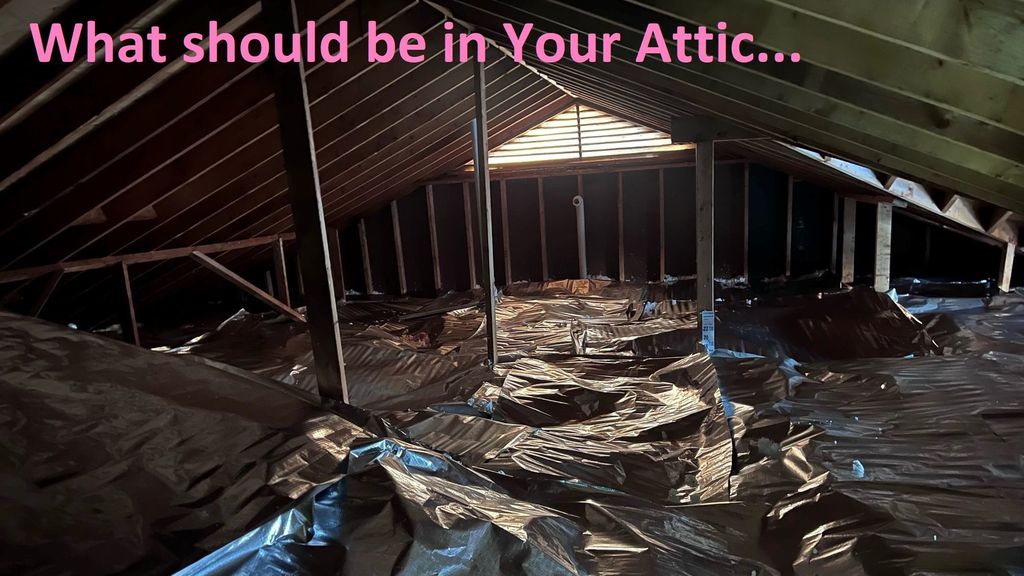
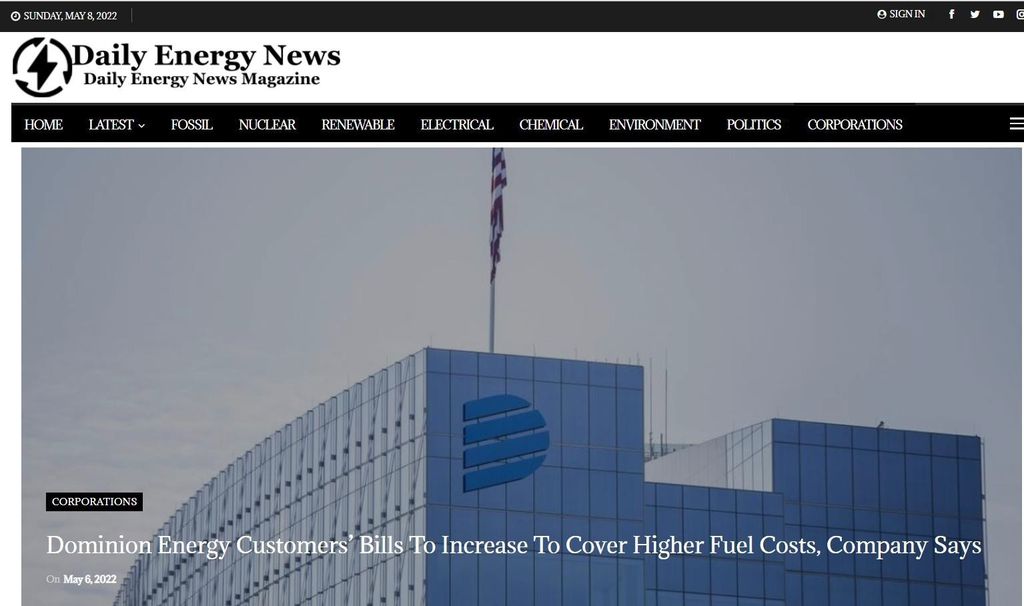
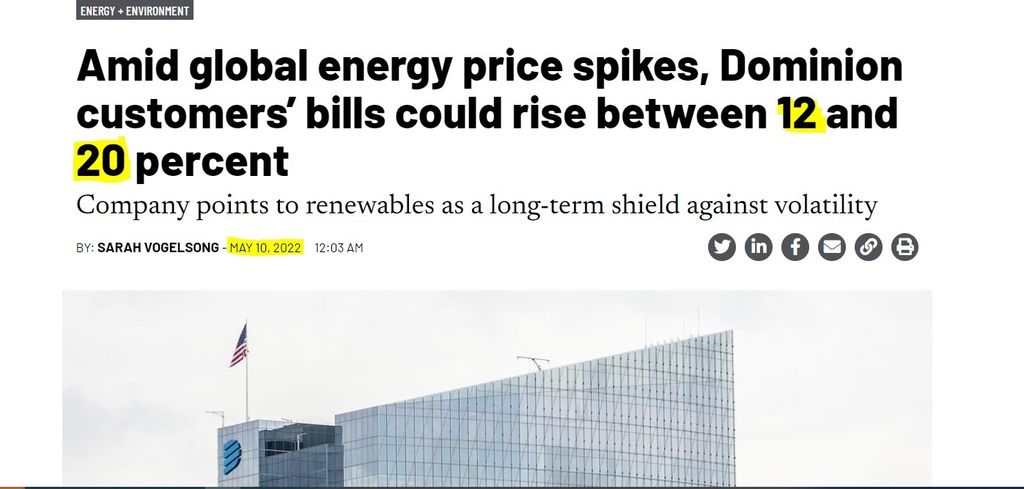
 The reason we first look at your home:
The reason we first look at your home:
We want to create the most efficient system possible, with a minimum investment.
There are tons of companies that will come out and never talk about the efficiency of your home and are more than happy to sell you more a more expensive solar system.
They are in the solar business and they are into
selling it to you... the homeowners.
If we can show you how to combine the minimum energy efficiency efforts for controlling your overall home exposure, You are able to implement a smaller system:
Your investment is less,
Your CONTROL over your utility costs is MAXIMIZED!

38-in x 9-in 19-in
110.7

If you have been in a science class at any time, you have probably learned that heat transfers from an object of a greater temperature to an object of lower temperature. This is known as the law of thermodynamics. In your home, however, there are three types of heat transfer taking place at any given point:
1.Radiation
2.Conduction
3.Convection
Let’s take a look at each of these individually and how they impact your home’s thermal envelope and energy efficiency.
1.Radiation
The transfer of heat through empty space without an intervening medium creates the perfect platform for radiant heat transfer. The prime example is the energy that radiates from the sun. The sun travels through the vacuum of space before warming up the Earth and radiating down on the roof of a home. During the summer, radiant heat can cause attic temperatures to skyrocket.
If the attic is under insulated, this heat can penetrate the living spaces of the home.
2.Conduction
When heat transfers through conduction, it transfers by direct contact with solid materials. Essentially tiny particles of matter which are in direct
contact with each other allow the warmer temperature to transfer to the colder temperature of the materials. For example, the warm air in a home’s living room can pass through the colder areas of the living room’s ceiling flowing into the area above such as an attic or a bedroom . When the area above the ceiling is properly insulated, the transfer of heat is slowed maintaining more of the warmer air in the living room keeping t he room’s occupants cozy and warm during a frosty winter

3.Convection
The transfer of heat while in motion is called convection. The faster the motion of the particles of heat, the quicker the transfer of heat occurs. In the winter months, the heat from a home’s HVAC system enters a room and proceeds to rise to the cooler temperatures near the room’s ceiling.
This explains why heat rises and why the room’s floor may be cool to the touch.

The use of solar reflective material in homes and buildings as a way to reduce utility costs is not a new concept. In fact, the history of the use of solar reflective material and reflective foil insulation technologies dates back to as early as the 1920's when solar reflective material was used to insulate residential and commercial buildings.
.jpg)
In 1945, Alexander Schwartz, president of Infra Insulation, Inc. out of New York City, commercially produced a solar reflective insulation product he called INFRA Insulation designed to keep summer heat out and winter heat in a home or building. Architects and builders immediately embraced this solution as a way of building higher energy efficient homes. Infra Insulation, Inc. quickly became the largest producer of solar reflective insulation.
In the 1950's, INFRA Insulation was introduced to the consumer market as an accordion- fold style product and was touted as easily installed by anyone who could use a staple gun. Newspaper advertisements even depicted women installing the solar reflective insulation in their own homes. By the early 1960's, millions of square feet of solar reflective insulation has been installed in homes and buildings.
Unfortunately, an unfavorable FTC ruling against Infra Insulation Inc (rock wool insulation producers lobbied against Infra Insulation)., coupled with the untimely death of Schwartz in the early 1960's, resulted in the INFRA Insulation solar reflective insula ion product being taken off the market entirely by 1965 and the business being closed.
In 1950, the Home Builders Show was held in the National Guard Armory in Washington, D.C from May 12th to May 21st.
Heat flow tests were set up for the attendees for 10 days, 8 hours a day

Here is some classic information that was pulled from the show, the “Original” Hot Box Test for Radiant Barriers.
Here is some descriptive text that paraphrased the test event.
“Tests for UP-HEAT flow; including CONVECTION, RADIATION, and CONDUCTION, were made with 1 batt, 2 batts and 3 batts of semi-thick mineral wool insulation, and multiple sheets of accordion aluminum. Some of the aluminum tests were with open air-cells, others with closed or sealed air-cells. Dust was sprinkled on the aluminum. Similar test were made for DOWN HEAT flow and wall-heat flow.
In all tests, heat penetrated through the material wool insulation, which became uncomfortably warm to the touch also on the surface away from the heat/ whereas the accordion insulation did not permit the heat to pass during the entire 8 hours test each day, and the opposite surfaces remained cool to the touch. Both surfaces of mineral wool insulations remained warm even after the flow of heat to them was removed.

In the mid 1950s, when Clark E. Beck, PE, of Wright-Patterson Air Force Base engineered the development of solar reflective insulation technology for NASA and the space program, he couldn't have envisioned the variety of applications for which this insulation material would someday be used.
NASA was trying to find a way to protect the astronauts during space walks from the extreme temperature shifts ranging from -273 degrees Celsius to 238 degrees Celsius. They discovered that they would have to have a seven-foot thick protective layer on the space suit if they attempted to use conventional insulation. Obviously, this was way out of the question. Instead of trying to insulate the suits, they turned to reflective technology and used solar reflective insulation to solve the problem. NASA reflected the heat of their own body back at the astronauts to keep them warm, while at the same time they used the foil to reflect the deadly direct radiation from the sun (radiant heat) out of the space suit to keep them cool.
The material provided a reflective surface that kept more than 95 percent of the radiant energy from reaching the interior of the space suit. Small holes allow moisture to escape, while keeping longer heat waves from getting through. Weighing only slightly more than 17 pounds per thousand square feet. The material maintained constant, comfortable temperatures inside the space suit.
Solar reflective insulation has been in use by NASA since the Gemini and Apollo missions. The insulation was the prime element of the environment control system that allowed Apollo astronauts to work inside the Command Module in shirt sleeves, rather than in bulky space suits. Since the Gemini and Apollo missions, the solar reflective insulation has been used on virtually all spacecraft, including unmanned missions where instruments required thermal protection.

While solar reflective insulation has been around for longer than most imagined, the road to acceptance and popularity was not an easy one. But with the determination of energy-efficiency focused engineers, architects, builders and the reflective insulation industry itself, scientifically supported benefits of solar reflective insulation have become widely available and accepted by governmental agencies like ENERGY STAR, builders, and consumers alike as a cost-effective way to permanently reduce utility bills and increase the comfort of homes and buildings.

Shortly after the fall of Infra Insulation, Inc., several companies began developing their own reflective insulation products in various forms including those that include bubble layers, single-sided aluminum Kraft paper backed barriers, aluminum faced fiberglass, and even aluminum faced cardboard products. But the growth of the solar reflective insulation industry was faced with many challenges based on entrenched corporate interests in various forms of traditional mass insulation products like fiberglass, cellulose and rock wool. The traditional mass insulation companies recognized the increasing popularity of solar reflective insulation and the high competitive threat to their own products and tried to hinder the development or acceptance of radiant barriers in the marketplace through lobbyists and industry association campaigns.
The traditional mass insulation industry spent millions of dollars in marketing and educating consumers on the need for an R-Value rated insulation product and since solar reflective insulation do not have R-Values and using reflective solar insulation.
However, solar reflective insulation continued to gain the interests of architects and engineers who became convinced of their effectiveness and began specifying them in their building and design plans.
With the confidence and support of architects and engineers, word started spreading quickly in the insulation industry of the benefits of solar reflective insulation products and very well known testing facilities and research organizations conducted their own solar reflective insulation studies in order to quantify the results builders and the like were claiming as a result of the use of solar reflective insulation products. The Department of Energy, Oak Ridge National Laboratory, Florida Solar Energy Center, and Texas A&M University, to name a few, have proven substantial benefits solar reflective insulation provides.

California became the first state to implement minimum energy efficiency standards in 1974.
The California Energy Commission was created then to oversee the implementation of the new laws. The standards, referred to as Title 24, were updated in 2008 and again in 2019.
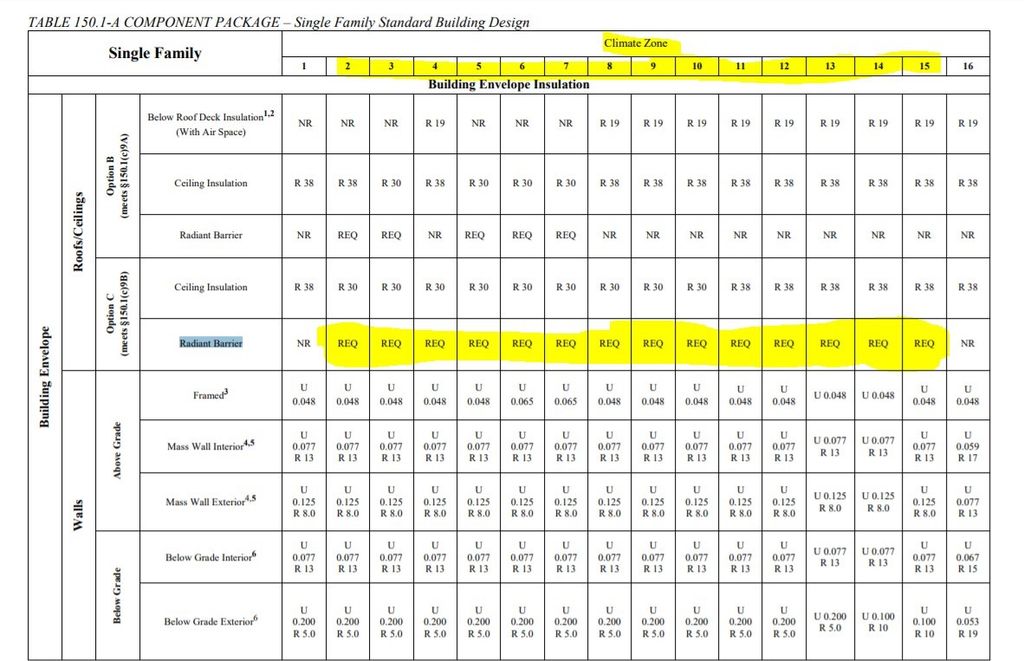
One of these is our client...
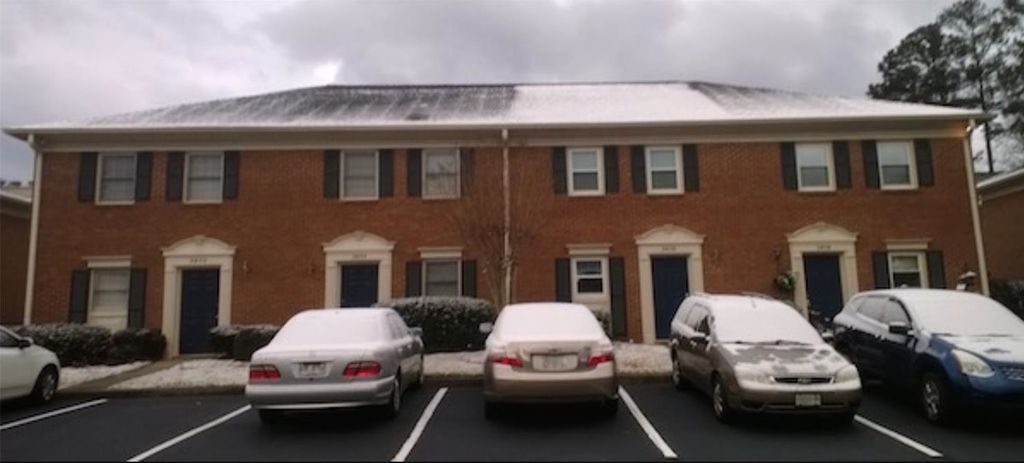
Can you guess which one?
On November 1, 2014, in Lexington SC, there was a freak snowstorm.
Nobody had a clue it was coming.
How freaky was this storm?
– there was milk and bread still in the grocery store that morning! 😊
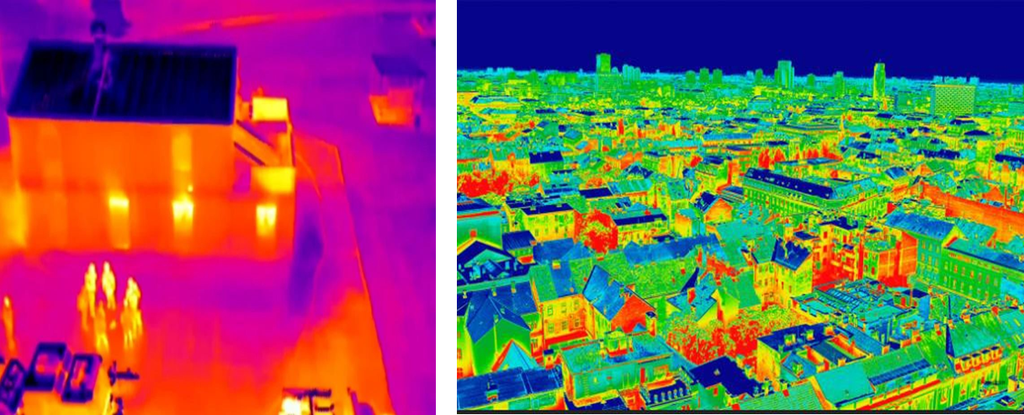
The fine print: GeoEye-1 provides 0.41 m (16 in) panchromatic and 1.65 m (5.4 ft) multispectral imagery at nadir in 15.2 km (9.4 mi) swaths. Google, which had its logo on the side of the rocket, has exclusive online mapping use of its data. While GeoEye-1 is capable of imagery with details the size of 41 centimeters per pixel (16 in/px), that resolution was only available to the U.S. government. Google has access to details of 50 cm per pixel (20 in/px). Prior maximum commercial imagery was 60 cm (24 in).[17]

This simple demonstration helps to show the effect that solar reflective material has when applied to the outside of the regular insulation.
Both sides have R-30 fiberglass insulation with 75 Watt lamps shining on them. The left side of the box has a single sheet of solar reflective material laid on top of the insulation. You can see how much radiant heat has been blocked by the thermometers on each
side. The right side without the solar reflective material reads a temperature of over 120™F, while the side with solar reflective material only reads 88.7™F.
To produce a clear image, the lights were turned off just before the picture was taken.
Reflective insulation systems are fabricated from aluminum foils with a variety of backings, such as kraft paper, plastic film, polyethylene bubbles, or cardboard. The resistance to heat flow depends on the heat flow direction. Reflective insulation is the most effective way at reducing downward heat flow. Reflective insulation systems are typically located between roof rafters, floor joists, or wall studs. If a single reflective surface is used alone and faces an open space, such as an attic, it is called a radiant barrier.
Installing reflective insulation is similar to placing batts and blankets. Often, reflective insulation materials have flanges that are to be stapled to wall studs or to joists in attics or floors. Since reflective insulation materials will conduct electricity, one must avoid making contact with any bare electrical wiring. The insulation's effectiveness depends on proper installation. Therefore, it's best to have a certified insulation installer do it. If you'd like to have it installed professionally, you should:
The U.S. Department of Energy reports that Green Solutions technology is the most effective way to reduce downward heat flow.
1.Change 5 lights Change a light, and you help change the world. Replace the conventional bulbs in your 5 most frequently used light fixtures with bulbs that have the ENERGY STAR and you will help the environment while saving money on energy bills. If every household in the US, took this one simple action we would prevent greenhouse gases equivalent to the emissions from nearly 10 million cars.
2.Look for ENERGY STAR Qualified products When buying new products, such as appliances for your home, get the features and performance you want AND help reduce greenhouse gas emissions and air pollution. Look for ENERGY STAR qualified products in more than 50 product categories, including lighting, home electronics, heating and cooling equipment and appliances
3.Heat and cool smartly Simple steps like cleaning air filters regularly and having your heating and cooling equipment tuned annually by a licensed contractor can save energy and increase comfort at home, and at the same time reduce greenhouse gas emissions. When it's time to replace your old equipment, choose high efficiency products for your home.
4.Seal and insulate your home Sealing air leaks and adding more insulation to your home is a great do it yourself projecs. New technologies in high quality Radiant Barriers that are highly reflective at least 97% and that breathe added over insulation can reduce energy the most over conventional insulation. The biggest leaks are usually found in the attic and basement. If you are planning to replace windows, choose ENERGY STAR qualified windows for better performance, Forced air ducts that run through unconditioned spaces are often big energy wasters. Seal and insulate any ducts in attics and crawlspaces to improve the efficiency of your home. Not sure where to begin? A home energy audit can also help you find alr leaks, areas with poor insulation, and evaluate the over-all energy efficiency of your home. By taking these steps, you can eliminate drafts, keep your home more comfortable year round, save energy that would otherwise be wasted, and reduce greenhouse gas emissions.
5.Use green products Green Products are environmentally friendly and reduce electricity and the demand for more energy use. There are two ways to use green products: you can build with green products or you can modify your house to generate your own green power.
Anywhere from 2-5% of all residential heat loss comes from electrical outlets and wall switches.
The equivalent of leaving a window open all year long.
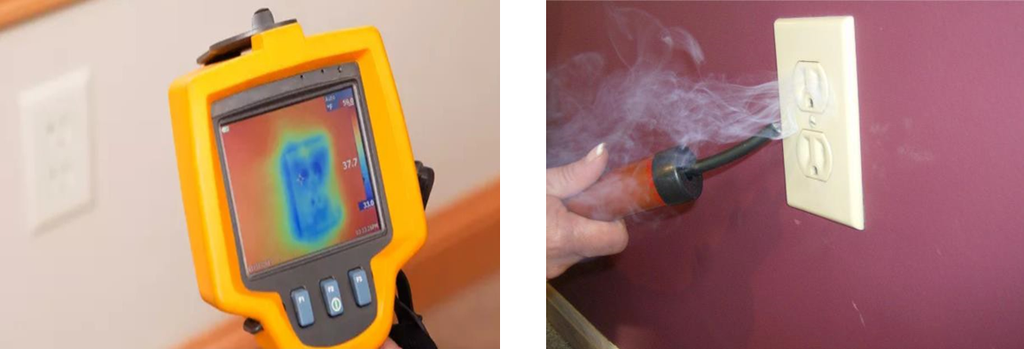
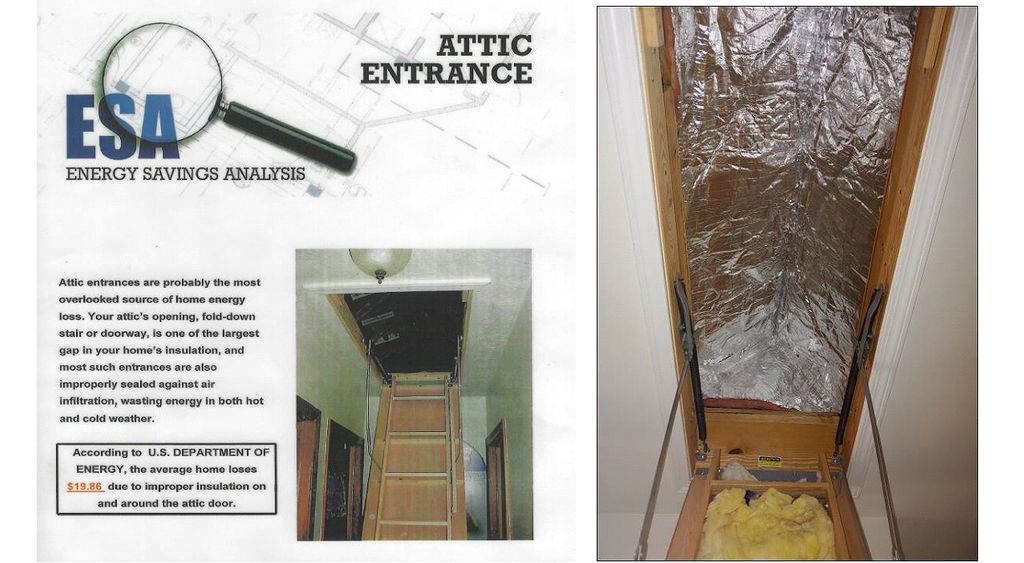
.jpg)

https://treehozz.com/should-i-wrap-my-water- heater-with-insulation
Our customers rave about how the NASA Approved Attic Wrap and Seal Service makes their home more comfortable and saves them money!
.jpg)
We have financing available. We also accept cash and credit cards: MC, VISA, Discover, AMEX, Apple Pay – Fees apply 2.9% .25¢ Let us know if you would like to speak with our previous customers. We supply names and phone numbers upon request.
